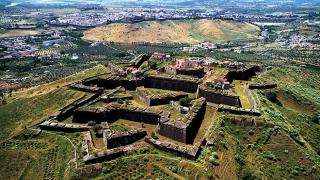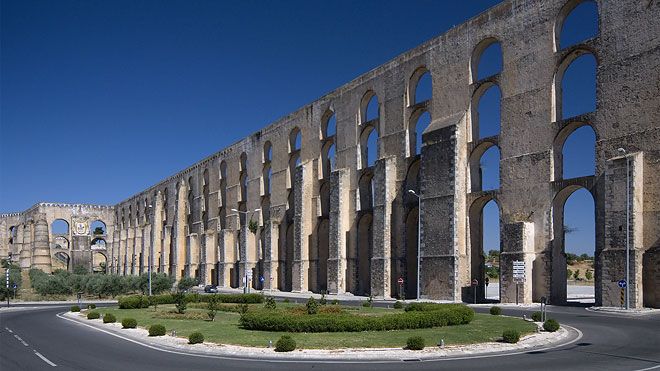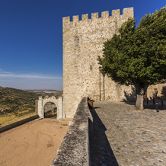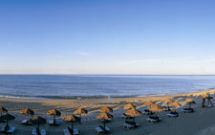Visit Elvas

Don't miss
- Visit Elvas during the São Mateus Fair, in September
- Eat sericaia with ameixas d’Elvas
Located close to the border, Elvas fought to maintain the independence of Portugal and its history. By doing so, it became an example for all mankind.
Upon our arrival in the city, we are greeted by a magnificent Aqueduct extending a distance of 7 km and consisting of 843 arches, constructed by the same man who built the Tower of Belém, in Lisbon, architect Francisco de Arruda. It size and numbers are as impressive as what we will discover ahead of us. We have, in fact, just entered the largest bulwarked fortification in the world, with its defensive structures in the shape of a star that enclose a perimeter of nearly 10 km, which are a unique testimony to the development of military strategy up to the 19th century. The fortifications were very important in the battles with Spain for the independence of Portugal in the mid-17th century, and served as a base for General Wellington during the Napoleonic Wars in the early 19th century.
Today, the fortifications of Elvas are a World Heritage site. The military section that is preserved today is made up of the Islamic and Medieval walls and the ring of walls from the 17th century influenced by the Dutch style of Cosmander, plus the Forte de Santa Luzia (17th century), the Forte da Graça (18th century) and three small fortifications from the 19th century – São Mamede, São Pedro and São Domingos. If we were birds, we would see the surprising design of these structures on the ground, which we can only comprehend in aerial photographs of or guess at when we visit the monuments and view the surrounding landscape.
In the heart of Elvas, the area of the Castle is the oldest part of the city. From there to the Praça da República square, where the old Cathedral is located, today the Church of Nossa Senhora da Assunção, we pass by the Domínicas Church, with its original octagonal floor plan, past the Manueline pillory and the Torre Fernandina. Along these streets it is easy to identify the arches that served as the old entries through the walls.
We can also visit other important monuments, such as the São Domingos Church, the Military Museum and the Igreja da Ordem Terceira de São Francisco, and two museums that mustn’t be missed: the modern Museum of Contemporary Art and the Museum of Photography João Carpinteiro, where we travel back in time to the earliest days of this art, and find a camera from 1898 and proofs dated 1860.
With its history of battles and bravery, Elvas is today a quiet city, where we are well received and offered regional delicacies such as migas com entrecosto (sautée of breadcrumbs and garlic with spare ribs), ensopado de Borrego (lamb stew), or carne de porco à alentejana (Alentejo-style pork with clams). When it comes to sweets, there’s no resisting the famous ameixas d’Elvas (preserved plums), the perfect accompaniment to sericaia (baked dessert made of eggs, sugar, milk and cinnamon), not to mention the traditional sweets azevias (sweet pumpkin pockets), nogados (dough fritters), enxovalhadas (lemon and cinnamon-flavoured cakes) and filhós (Portuguese doughnuts).













 Explore
Explore 
 Remember and Share
Remember and Share 


